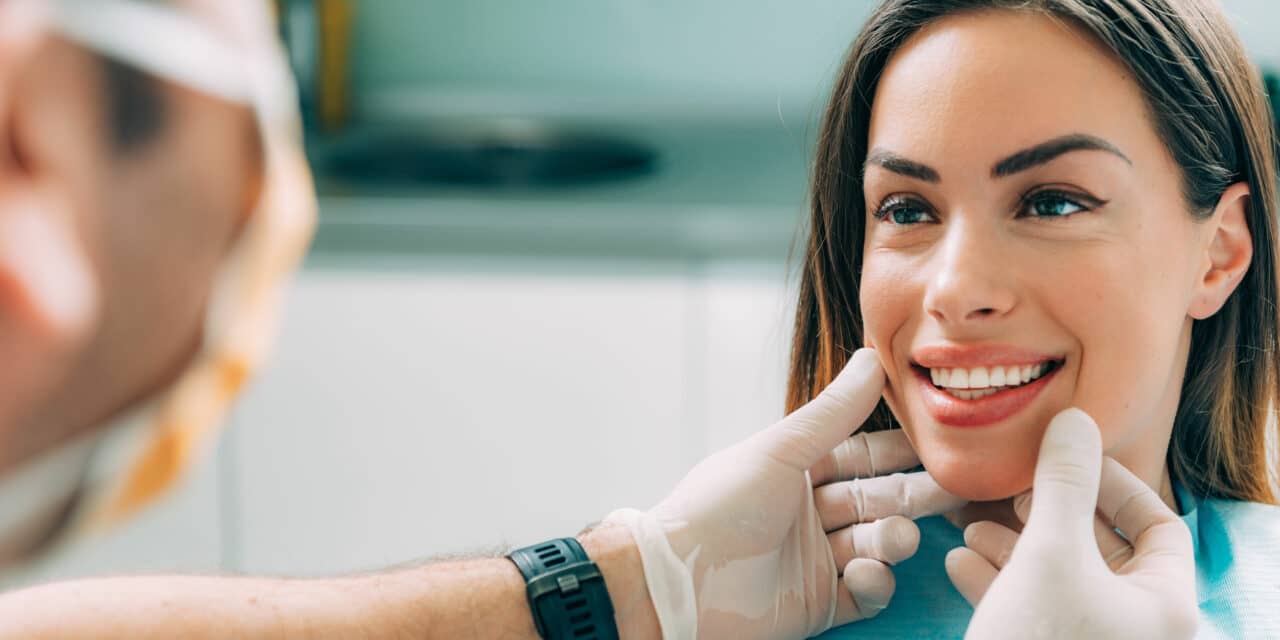There’s an explosion of direct-to-consumer aligner companies, but patients are better served seeing a professional.
With the ability to simply log onto a computer in pursuit of straight teeth, many consumers are doing just that. Direct-to-consumer companies like SmileDirect Club and hundreds of others working from the same model promise easy, do-it-yourself teeth aligning at affordable prices. It’s a model with plenty of appeal, but one that leaves much to be desired, according to many orthodontists.
“We’ve really seen these businesses explode over the last three years,” says Eniko Macrae, DMD, of Creston Dental and Braces in Greenville, SC. “They have big marketing budgets and target consumers with ads on TV, social media and more.”
The key here, however, says Macrae, is the word consumer. “The difference is the outlook of the provider,” she says. “The do-it-yourself companies are focused on sales to a consumer. Orthodontists consider alignment part of healthcare and just like medical doctors, our number-one focus is the patient. When sales is the main focus, it doesn’t usually work out best for the patient.”
That adds up to a host of important differences in the care patients will or won’t receive, depending on the model of alignment they choose.
The office vs. the home
One of the key differences in aligner treatment delivered by an orthodontist versus a direct-to-consumer business is the education aspect of care. When buying a DIY aligner, says Macrae, you’re essentially buying cosmetics, but not health. “An orthodontist will take the time to fully inform you of your options to help you make the best decision for your individual needs,” she explains. “You’re not just buying a pretty smile, but health.”
Some potential patients may not even be candidates for aligners, Macrae says, but that’s information they can only receive from a specialist. In addition, orthodontists are taking a holistic approach to dental health. “We are dentists first,” she says. “Before we put on braces or aligners, we ensure other health issues are addressed.”
For instance, a patient with active periodontal disease is not a good candidate for any sort of orthodontics until they have received treatment for that issue. “If gum disease is ignored and not treated first, aligners can do a lot of damage, ranging from mobility of teeth to worst-case scenario loss of teeth.”
Before advancing to teeth alignment, orthodontists check in with patients’ dentist to get the full picture of their dental health. With the direct-to-consumer model, that’s left off the table entirely.
With you for the journey
Another important contrast between the DIY model and orthodontist-guided care is the oversight patients receive as they progress with treatment. “We’re with patients every step of the way,” says Macrae. “We’re invested in the journey and we’re not happy until the patient receives the best results possible.”
As Macrae explains, orthodontics is a reactive process, and every patient is unique. “Not everyone’s teeth move the same and we make adjustments along the way if treatment doesn’t progress as expected,” she says. “With DIY, the patient isn’t monitored like that.”
There’s also the issue of the initial impression of the teeth, from which orthodontists formulate the patient’s treatment. In the case of direct-to-consumer companies, the consumer sends in a scan of their teeth, rather than the in-office model, where trained professionals make the impression. “When using the DIY companies, a tech looks at the scans and makes aligners to deliver a pretty smile,” says Macrae. “In the case of orthodontists, it’s not uncommon for us to go back and forth several times to get the impressions just right.”
Cost comparison
One of the most common arguments for the DIY model is cost. But sometimes that’s misunderstood, too, says Macrae. “There’s a misconception that the at-home model is cheaper,” she explains. “Most orthodontists have a sliding scale for fees. If it’s a simple case, they will likely do it for less than patients might expect.”
Plus, if a patient chooses a DIY aligner and ultimately ends up with an orthodontist for a do-over or to finish the job, the cost grows well beyond that initial fee. “The direct-to-consumer marketing doesn’t explain that aspect,” says Macrae. “There’s more value with professional orthodontics because we’re invested in your journey.”
At the end of the day, patients are much better served by using a hands-on, trained professional to oversee their aligner treatment. “It’s the basic physics of orthodontics,” says Macrae. “If straightening teeth was easy, we wouldn’t need 11 years of training to do it.”
Compare 11 Different Aligner Systems
Sponsored by

Medqor is committed to protecting and respecting your privacy. We may contact you about our products and services or share information with sponsorship partners, as well as other content that may be of interest to you. By submitting your information, you consent to us contacting you for this purpose in accordance with our privacy policy.
For further information, please check out our privacy policy here











